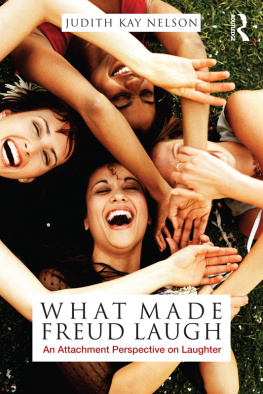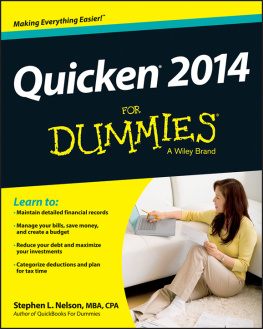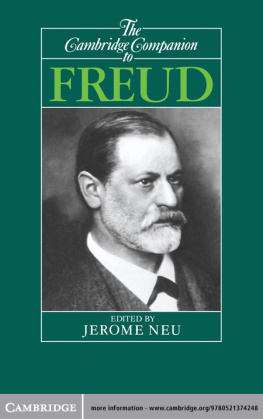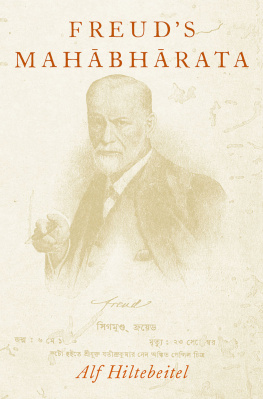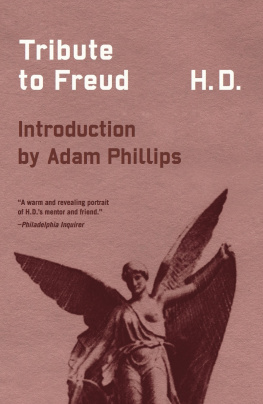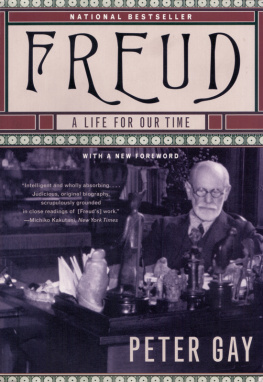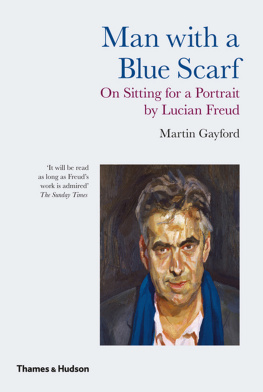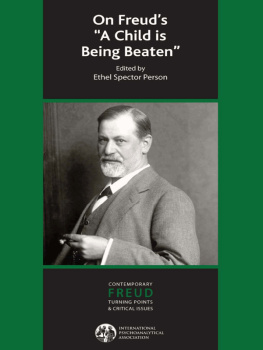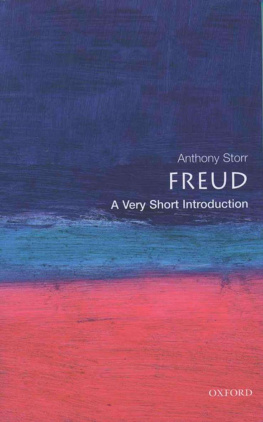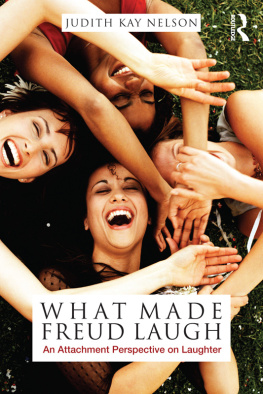Nelson - What Made Freud Laugh
Here you can read online Nelson - What Made Freud Laugh full text of the book (entire story) in english for free. Download pdf and epub, get meaning, cover and reviews about this ebook. publisher: Taylor and Francis, genre: Home and family. Description of the work, (preface) as well as reviews are available. Best literature library LitArk.com created for fans of good reading and offers a wide selection of genres:
Romance novel
Science fiction
Adventure
Detective
Science
History
Home and family
Prose
Art
Politics
Computer
Non-fiction
Religion
Business
Children
Humor
Choose a favorite category and find really read worthwhile books. Enjoy immersion in the world of imagination, feel the emotions of the characters or learn something new for yourself, make an fascinating discovery.
- Book:What Made Freud Laugh
- Author:
- Publisher:Taylor and Francis
- Genre:
- Rating:3 / 5
- Favourites:Add to favourites
- Your mark:
- 60
- 1
- 2
- 3
- 4
- 5
What Made Freud Laugh: summary, description and annotation
We offer to read an annotation, description, summary or preface (depends on what the author of the book "What Made Freud Laugh" wrote himself). If you haven't found the necessary information about the book — write in the comments, we will try to find it.
Nelson: author's other books
Who wrote What Made Freud Laugh? Find out the surname, the name of the author of the book and a list of all author's works by series.
What Made Freud Laugh — read online for free the complete book (whole text) full work
Below is the text of the book, divided by pages. System saving the place of the last page read, allows you to conveniently read the book "What Made Freud Laugh" online for free, without having to search again every time where you left off. Put a bookmark, and you can go to the page where you finished reading at any time.
Font size:
Interval:
Bookmark:
WHAT MADE FREUD LAUGH
In her characteristically engaging style, Nelson explores a topic that has fascinated and frustrated scholars for centuries. Initially drawn to the meaning of laughter through her decades of work studying crying from an attachment perspective, Nelson argues that laughter is based in the attachment system, which explains much about its confusing and apparently contradictory qualities.
Laughter may represent connection or detachment. It can invite closeness, or be a barrier to it. Some laughter helps us cope with stress; other laughter may serve as a defense and represent resistance to growth and change. Nelson resolves these paradoxes and complexities by linking attachment-based laughter with the exploratory/play system in infancy, and the social/affiliative, conflict/appeasement, sexual/mating, and fear/wariness systems of later life. An attachment perspective also helps to explain the source of different patterns and uses of laughter, suggesting how and why they may vary according to attachment style, and explaining the multiple meanings of laughter in the context of the therapeutic relationship. As she discovers, attachment has much to teach us about laughter, and laughter has much to teach us about attachment. This lively book sheds light on the ways in which we connect, grow, and transform and how, through shared humor, play, and delight, we have fun doing so.
Judith Kay Nelson, MSW, PhD, is the former dean and currently on the faculty of the Sanville Institute for Clinical Social Work and Psychotherapy, California. She also teaches attachment and neurobiology in the clinical social work doctoral program at Smith College, Massachusetts. She has taught and presented throughout the United States and Europe on topics related to crying, grief, laughter, and attachment.
WHAT MADE FREUD LAUGH
An Attachment Perspective on Laughter

First published 2012
by Routledge
711 Third Avenue, New York, NY 10017
Simultaneously published in the UK
by Routledge
27 Church Road, Hove, East Sussex BN3 2FA
Routledge is an imprint of the Taylor & Francis Group, an informa business
2012 Judith Kay Nelson
The right of Judith Kay Nelson to be identified as author of this work has been asserted by him/her in accordance with sections 77 and 78 of the Copyright, Designs and Patents Act 1988.
All rights reserved. No part of this book may be reprinted or reproduced or utilized in any form or by any electronic, mechanical, or other means, now known or hereafter invented, including photocopying and recording, or in any information storage or retrieval system, without permission in writing from the publishers.
Trademark notice: Product or corporate names may be trademarks or registered trademarks, and are used only for identification and explanation without intent to infringe.
Library of Congress Cataloging in Publication Data
Nelson, Judith Kay, 1941
What made Freud laugh : an attachment perspective on laughter / by Judith Kay Nelson.
p. cm.
Includes bibliographical references and index.
1. Laughter. 2. Attachment behavior. I. Title.
BF575.L3N45 2012
152.43dc23 2012005595
ISBN: 978-0-415-99832-1 (hbk)
ISBN: 978-0-415-99833-8 (pbk)
ISBN: 978-0-203-10326-5 (ebk)
For Aurelia June and Leo Cassady
CONTENTS
Acknowledgments
I once read that only a person with no sense of humor would attempt to write a book on laughter. The following people are responsible for helping me keep mine alive and well while working on this project, and I extend a hearty thank you to each of them and wish for them much laugher and happiness.
George Zimmar at Routledge has been a supportive and understanding editor. His patience and words of encouragement have kept me steady and on track throughout. I also greatly appreciate the help of Marta Moldvai, who has been a steady presence during the publication process.
My team of writing helpers has also been amazing. The time, effort, and sheer brain power they have donated have made all the difference in preparing this book. For help on the front lines, I thank Cynthia Nelson, Rose Jade, Marcia Hoogstra, and Lori Pesavento for standing by at all hours to read and edit, and Greta Christina, Ingrid Nelson, and Russ Nelson for fielding my editing questions by return e-mail. My colleagues/readersMaureen Adams, Ann Cameron, Yvette Esprey, and Charles Rizzuttohave been responsive, helpful, supportive, and generous as they diligently read and responded to the chapters I sent along at regular intervals. I appreciate their generosity and their individual and collective wisdom and know that the work is more solid because of them.
To the many colleagues who have shared anecdotes, brainstormed about ideas and theories, and generally supported and encouraged me, I am grateful beyond measure: Cynthia O Connell, Lise and Neal Blumenfeld, Suzanne Bennett, Allan and Judy Schore, Kate White, and Merle Davis. Colleagues and students from The Sanville Institute for Clinical Social Work and Psychotherapy have been standing by with ideas, examples, and much good old-fashioned laughter. I especially thank Gregory Bellow, Jo Ann Bellow, Mary Coombs, Tina Casenza, Angeleen Campra, Deborah Levine, Silvio Machado, Lonnie Prince, and the Sanville students who worked on the laughter project: Hillary Dreyfuss, Michelle Frisch, Paula Holt, Sidney Mullen, and Cazeaux Nordstrom. Several Smith College School for Social Work doctoral students also contributed ideas and examples. Thank you especially to Sally Comer and Maria Oliva.
I would also like to thank some of the dear friends who have helped to make this project both fun and funny To the Womens GroupMargo Arcanin, Margaret Ballou, Barbara Miller, Judy Morhar, Donna Rosenheim, Susan Sandler, and Ruth SandsI offer my gratitude for the deep bonds of friendship, closeness, loyalty, and confidence over so many years. Thank you, too, to the Womens Potluck GroupPattie Howard, Cindy Black, Trudi Elm, Cathy Parker, Brenda Adams, and Diane Fischerfor the regular infusions of creative energy and good food.
Laughter, for me, began in my family. Thank you to my sister, Marcia, who has been giggling with me since childhood, to the new kids in the family, Ava and Cecilia, Tanner and Wyatt, for reminding me about childhood, and to the former kids, Corrie Hoogstra, Dirk Hoogstra, and Ingrid Nelson, for demonstrating developmental changes and entertaining me in the process. Thank you also to Craig Hoogstra who likes to tell jokes, Russ Nelson for playing second string on the yo-yo team, my mother, Lucille Baker, who had the loudest laugh in the world, and my father, Kenneth Baker, who could insert odd jokes and facts in the funniest places. I am grateful also to Uncle Jack, Aunt Pauline, and the McDermott cousins who taught me about true wit and kept it coming; the rest of the Payne cousins in Michigan, Joan and Jerry Horne, Larry, David, and Barbara Payne, for making childhood fun; the Payne cousins in Mississippi for all the good times on the farm; and the Baker cousins in Mississippi, especially Dorothy Jean Latham and Sonny Latham, for keeping the southern storytelling traditions alive. I would also like to thank my in-laws of the past 25 years, Dick and Jeri Williams, for the good company and warm winter hospitality, Ellen Pesavento and Teri and Michael Miranti for being family, and Derek and Jordan Miranti for all that kid energy and playful good fun.
I would like to thank my immediate familythe San Francisco branch, Ingrid Nelson and Greta Christina, for their enthusiasm and understanding of what it takes to get this done, and the Portland branch, Cynthia Nelson, Dusty Reske, Aurelia, and Leo, for making every day for play and laughter.
Next pageFont size:
Interval:
Bookmark:
Similar books «What Made Freud Laugh»
Look at similar books to What Made Freud Laugh. We have selected literature similar in name and meaning in the hope of providing readers with more options to find new, interesting, not yet read works.
Discussion, reviews of the book What Made Freud Laugh and just readers' own opinions. Leave your comments, write what you think about the work, its meaning or the main characters. Specify what exactly you liked and what you didn't like, and why you think so.

